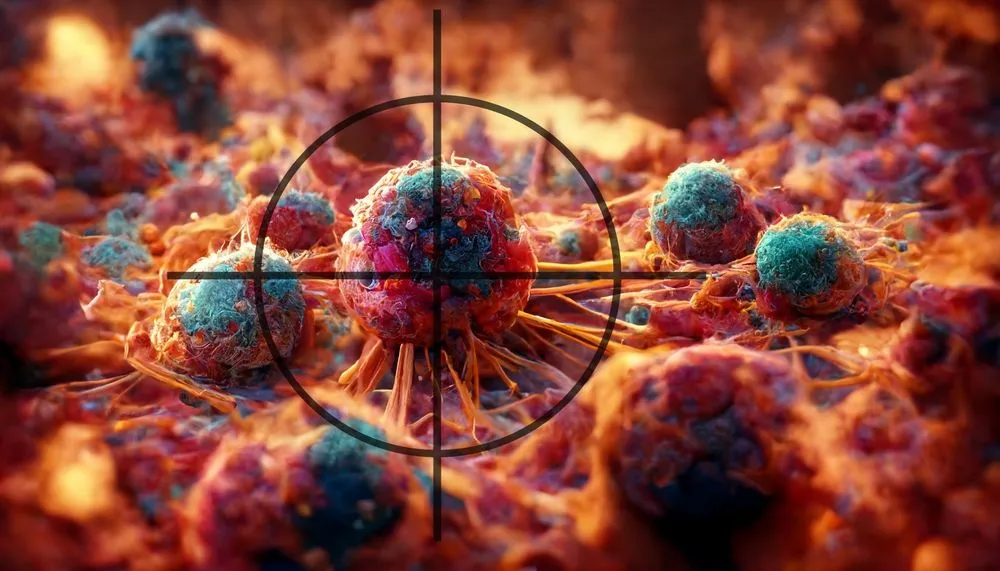The Innovation of AML Therapy: A Look From 2000 to the Present

If you or one of your loved ones has been affected by acute myeloid leukemia, you might be curious about how treatments have evolved over the years. On Friday, we reviewed what AML treatment was like from the 1970's to 2000. Now we will take you through all of the innovation that has happened from the year 2000 to today.
2000 to 2010 - Targeted Therapies and Stem Cell Transplants
The early 2000s witnessed the emergence of targeted therapies for AML. The first notable development was the approval of gemtuzumab ozogamicin (Mylotarg), which is an antibody-drug conjugate, a type of drug that combines the specificity of monoclonal antibodies with the cell-killing properties of chemotherapy drugs. These drugs are able to deliver chemotherapy directly to cancer cells while sparing healthy cells. Mylotarg specifically targets CD33-expressing AML cells.
Mylotarg was initially approved in 2000 but later withdrawn due to safety concerns and questions about its effectiveness. Following its withdrawal, Mylotarg underwent further study and evaluation to assess its safety and efficacy more thoroughly. Due to new study results, it was re-approved in 2017 specifically for newly diagnosed CD33-positive AML in combination with chemotherapy and relapsed/refractory CD33-positive AML. The new approval also came with revised dosing regimens and safety monitoring protocols to better manage the side effects.
Additionally, allogeneic stem cell transplantation, which had been a treatment option for AML since earlier years, continued to be refined. Advances in donor matching and reduced-intensity conditioning regimens expanded the eligibility of patients for this potentially curative procedure.
Year 2010 to 2015 - Molecular Profiling
Genetic research started to play a more significant role in AML treatment decisions. Understanding the specific genetic mutations and molecular markers associated with AML became crucial in tailoring therapy. Drugs like midostaurin (a FLT3 inhibitor), approved in 2017, and ivosidenib and enasidenib (both IDH inhibitors), approved in 2018, were among the first targeted therapies to receive approval for specific genetic subtypes of AML.
Year 2015 to 2020 - Breakthroughs for Older Adults
The years leading up to 2020 marked a period of substantial progress in the development of targeted therapies. Venetoclax, in combination with hypomethylating agents called azacitidine or decitabine, demonstrated remarkable efficacy in treating older adults with AML who also had other medical conditions. This combination therapy received FDA approval in 2018 and has since become a standard treatment option for many patients. Venetoclax is especially useful because it is an oral therapy that patients can take from the comfort of their own homes.
Additionally, a more potent FLT3 inhibitor called gilteritinib received FDA approval in 2018.
Year 2020 to 2023 - Emerging Therapies and Immunotherapies
Currently, emerging therapies, including novel agents and immunotherapies, are being investigated for AML in clinical trials. These therapies aim to target specific mutations and pathways implicated in AML, offering new hope for patients.
Immunotherapies, such as chimeric antigen receptor (CAR) T-cell therapies and immune checkpoint inhibitors, have also gained attention in the treatment of AML. While not yet standard treatments, these approaches have shown promise and are being explored further.
What's Next for AML Treatment?
The landscape of AML treatment has transformed significantly from the year 2000 to 2023. Advances in understanding the genetic and molecular underpinnings of the disease have led to more personalized treatment approaches. Targeted therapies, immunotherapies, and emerging treatments hold promise for improving outcomes and quality of life for AML patients. Clinical trials hold the key to making these therapies a reality to larger groups of people with AML.
To learn more about emerging therapies and what's new in AML clinical trials, visit our news coverage section of HealthTree University. We visit important AML meetings each year to interview experts about the trials they are working on. This section will be updated again in December 2023 after the American Society of Hematology annual meeting!
Watch HealthTree University News Coverage Here
If you or one of your loved ones has been affected by acute myeloid leukemia, you might be curious about how treatments have evolved over the years. On Friday, we reviewed what AML treatment was like from the 1970's to 2000. Now we will take you through all of the innovation that has happened from the year 2000 to today.
2000 to 2010 - Targeted Therapies and Stem Cell Transplants
The early 2000s witnessed the emergence of targeted therapies for AML. The first notable development was the approval of gemtuzumab ozogamicin (Mylotarg), which is an antibody-drug conjugate, a type of drug that combines the specificity of monoclonal antibodies with the cell-killing properties of chemotherapy drugs. These drugs are able to deliver chemotherapy directly to cancer cells while sparing healthy cells. Mylotarg specifically targets CD33-expressing AML cells.
Mylotarg was initially approved in 2000 but later withdrawn due to safety concerns and questions about its effectiveness. Following its withdrawal, Mylotarg underwent further study and evaluation to assess its safety and efficacy more thoroughly. Due to new study results, it was re-approved in 2017 specifically for newly diagnosed CD33-positive AML in combination with chemotherapy and relapsed/refractory CD33-positive AML. The new approval also came with revised dosing regimens and safety monitoring protocols to better manage the side effects.
Additionally, allogeneic stem cell transplantation, which had been a treatment option for AML since earlier years, continued to be refined. Advances in donor matching and reduced-intensity conditioning regimens expanded the eligibility of patients for this potentially curative procedure.
Year 2010 to 2015 - Molecular Profiling
Genetic research started to play a more significant role in AML treatment decisions. Understanding the specific genetic mutations and molecular markers associated with AML became crucial in tailoring therapy. Drugs like midostaurin (a FLT3 inhibitor), approved in 2017, and ivosidenib and enasidenib (both IDH inhibitors), approved in 2018, were among the first targeted therapies to receive approval for specific genetic subtypes of AML.
Year 2015 to 2020 - Breakthroughs for Older Adults
The years leading up to 2020 marked a period of substantial progress in the development of targeted therapies. Venetoclax, in combination with hypomethylating agents called azacitidine or decitabine, demonstrated remarkable efficacy in treating older adults with AML who also had other medical conditions. This combination therapy received FDA approval in 2018 and has since become a standard treatment option for many patients. Venetoclax is especially useful because it is an oral therapy that patients can take from the comfort of their own homes.
Additionally, a more potent FLT3 inhibitor called gilteritinib received FDA approval in 2018.
Year 2020 to 2023 - Emerging Therapies and Immunotherapies
Currently, emerging therapies, including novel agents and immunotherapies, are being investigated for AML in clinical trials. These therapies aim to target specific mutations and pathways implicated in AML, offering new hope for patients.
Immunotherapies, such as chimeric antigen receptor (CAR) T-cell therapies and immune checkpoint inhibitors, have also gained attention in the treatment of AML. While not yet standard treatments, these approaches have shown promise and are being explored further.
What's Next for AML Treatment?
The landscape of AML treatment has transformed significantly from the year 2000 to 2023. Advances in understanding the genetic and molecular underpinnings of the disease have led to more personalized treatment approaches. Targeted therapies, immunotherapies, and emerging treatments hold promise for improving outcomes and quality of life for AML patients. Clinical trials hold the key to making these therapies a reality to larger groups of people with AML.
To learn more about emerging therapies and what's new in AML clinical trials, visit our news coverage section of HealthTree University. We visit important AML meetings each year to interview experts about the trials they are working on. This section will be updated again in December 2023 after the American Society of Hematology annual meeting!

about the author
Katie Braswell
Katie joined HealthTree as the Community Director for AML in 2021 and became HealthTree's Director of Education in 2023. Katie is a registered dietitian who is passionate about health literacy and patient empowerment. She loves to cook, travel and spend time with her newborn son, husband and dog.
More on Navigating Your Health
Trending Articles
Upcoming Events

Get the Latest Acute Myeloid Leukemia Updates, Delivered to You.
By subscribing to the HealthTree newsletter, you'll receive the latest research, treatment updates, and expert insights to help you navigate your health.













